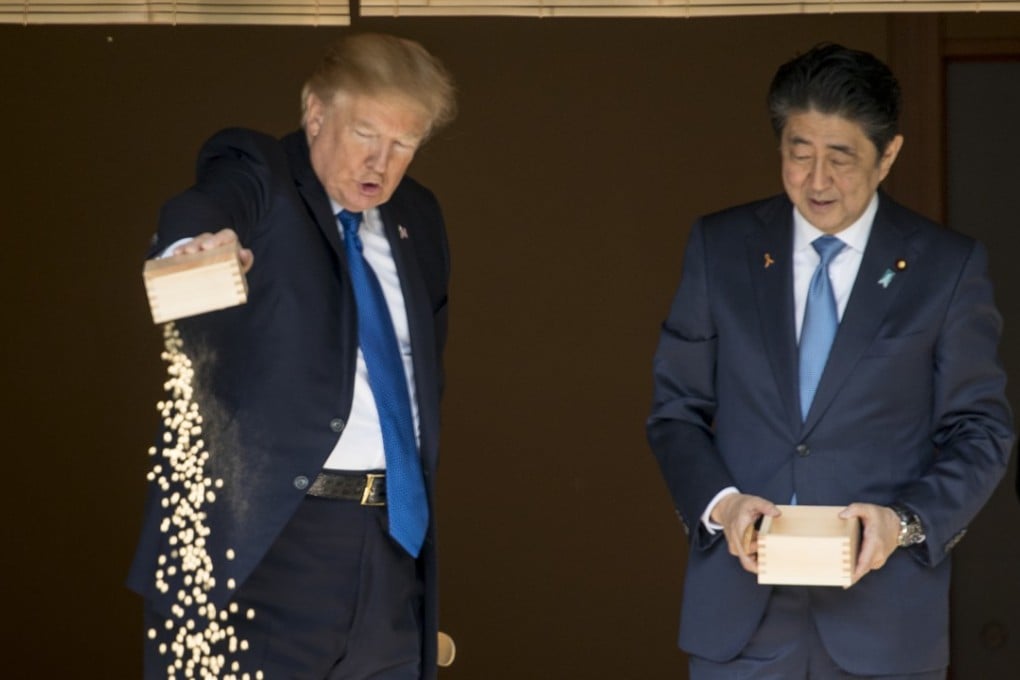Eye on Asia | With a friend who trumps Japan’s economic recovery, does Shinzo Abe really still need an enemy?
- This was supposed to be the time when five years of economic stimulus translated into real salary increases, but that’s not happening

Shinzo Abe’s bromance with Donald Trump is experiencing a serious rough patch.
The tension between the leaders of Japan and the US is building over slowing growth in Asia’s second-biggest economy.
Six months ago, Prime Minister Abe basked in headlines about Japan’s longest recovery since the 1980s and booming stocks. Then came President Trump’s trade war. As 2018 enters the home stretch, the narrative is back on weakening growth, stubborn deflation and renewed central-bank action.
The Bank of Japan admitted as much last week when it delayed its timeline for 2 per cent inflation for the umpteenth time. Retail sales are slowing, falling 0.2 per cent in September from the previous month. And the stock rally Abe once touted has fizzled. The Nikkei 225 Stock Average is down 8 per cent in the last 30 days alone.
That mean 2019 will be a much tougher year than Abe envisioned when he won a third term in September. It means, as analysts at Societe Generale predict, a return to increased fiscal stimulus. It means Abe’s plan to increase the sales tax to 10 per cent from 8 per cent next year looks terribly ill-timed. It also could mean the BOJ is back in the easing business.
The big focus in Japanese markets has been the odds of BOJ “tapering.” Since April 2013, Governor Haruhiko Kuroda pushed Tokyo’s quantitative easing into uncharted territory. The resulting 30 per cent drop in the yen helped stimulate export giants and, by extension, gross domestic product.
Talk about buyer’s remorse. No world leader visited Trump Tower sooner and with more enthusiasm in November 2016 than Abe

